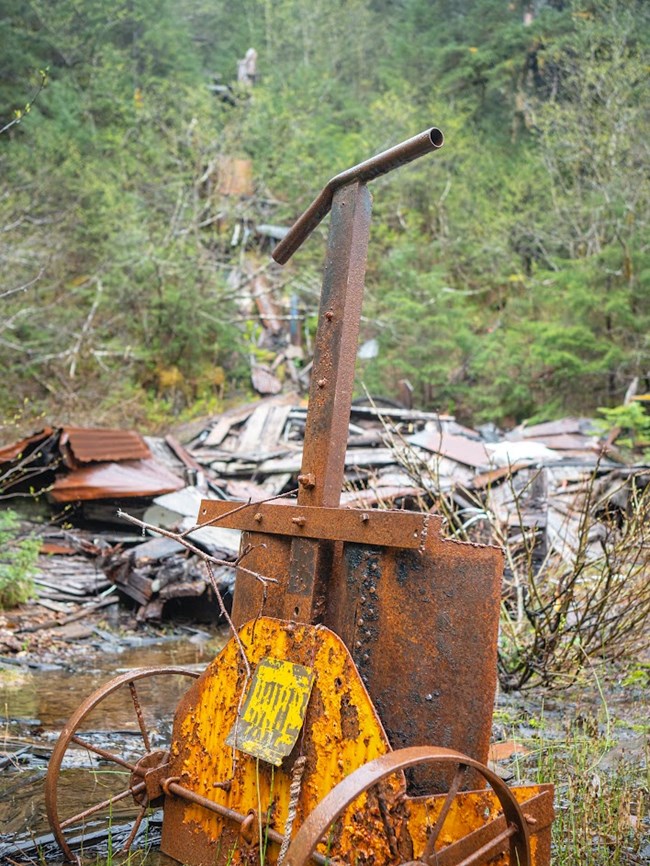Last updated: August 14, 2024
Article
National Park Service to Address Mine Contamination in Beauty Bay Alaska
The National Park Service (NPS) will conduct a time-sensitive mining waste removal project at the Glass-Hefner mine site located in Beauty Bay, Alaska, to prevent contamination of a creek that supports several salmon species in Kenai Fjords National Park. Historic mining activities have left behind processed ore, called mine tailings, which are high in heavy metals including arsenic. Erosion near and beneath the tailings pile could release the tailings into nearby Ferrum Creek. Funding from the Bipartisan Infrastructure Law will be used to remove and properly dispose of mine site waste to protect people, plants and animals that rely on healthy ecosystems.

NPS Photo
According to Sarah Venator, geologist at the NPS Alaska Regional Office, Glass-Heifner was originally established as a gold mine and remained active until the 1970s. NPS investigation of the site revealed the presence of contaminants like arsenic leading the NPS to initiate a site clean-up in the 1990s. “At this site, miners would excavate the gold ore, which was primarily a mineral called arsenopyrite found in quartz veins. Arsenopyrite is very high in arsenic,” Venator said. The minerals were processed, or milled, by crushing and gravity separation to get the gold out. The by-product of milling, which is gravel- to silt-sized crushed rock, is called tailings. “The by-product basically concentrated arsenic in the tailings. The arsenic had been locked up in solid mineral form inside of quartz veins, but now it was finely ground and released on the surface,” Venator said. According to Venator, in the 1990s the NPS determined that the best response action was to consolidate the tailings into one area on-site and cap them with cement. “This prevented animals and people from direct exposure to the contaminants and prevented rainwater from flowing into them.” This area is called the consolidated tailings impoundment.
A return site visit in 2021 revealed erosion cutting into a nearby bank toward the unlined tailings impoundment. “The concern is that if the erosion continues at the current rate that it will undercut that impoundment, leading to a failure of the impoundment structure, and the tailings could be released into Ferrum Creek.” The NPS is working to avoid the risk of contamination into the creek. “We know that arsenic at this concentration can have detrimental effects to wildlife,” Venator said.

NPS Photo
Ferrum Creek is home to four salmon species—king (coho) salmon, red (sockeye) salmon, pink (humpback) salmon and chum (dog) salmon— which are a significant economic and subsistence resource in Alaska. “King salmon have experienced a large population decline over the last few decades, making it especially important to protect their freshwater spawning habitat from contamination,” Venator said.
The Glass-Heifner mine is in a remote part of Kenai Fjords National Park which makes it challenging to access. “It’s pretty difficult to simply get to the site,” Venator explained. “It’s nearly a full day each way to transit there from the harbor in Seward near park headquarters.” While the NPS believes visitation to the site is low, the contamination presents risk to the environment and wildlife. Bipartisan Infrastructure Law funds are being used to assist in the cost of removing the contaminants from the mine site. While these funds help to dispose of the mine tailings, mitigating the long-term risk at the site is an ongoing process. Venator said that future efforts may be dedicated to addressing more of the site. “We are planning environmental investigations to identify whether or not we need to take further action at the site."
